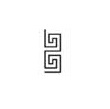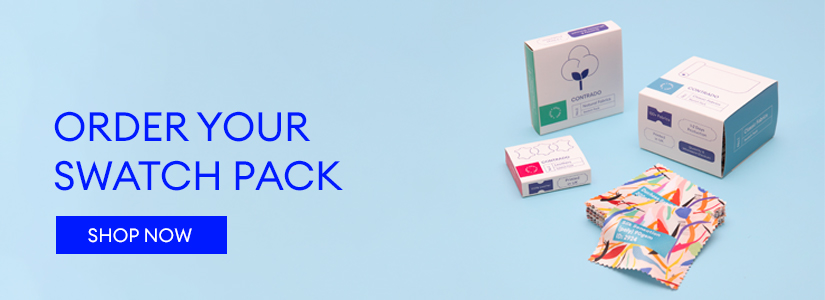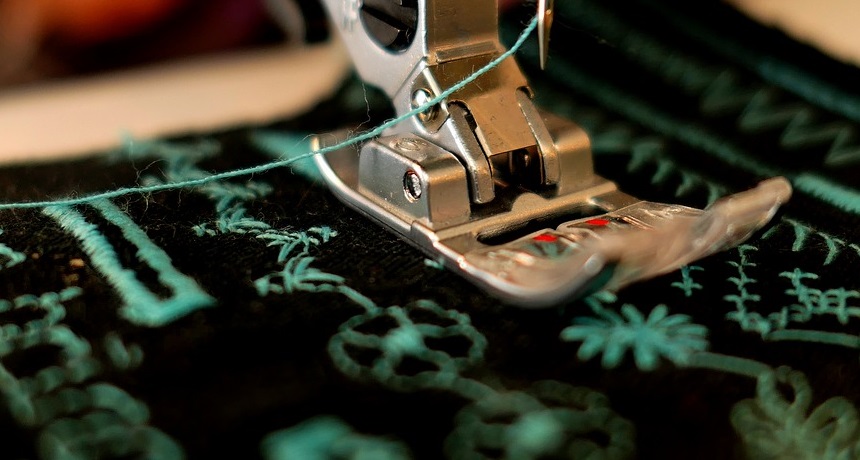If you’re only just embarking upon your sewing journey or you’re a well-seasoned stitcher, chances are your machine has more to offer than you think. Sewing machines can have anywhere from 8 to 100+ types of stitch settings alongside other tips and tricks, and the more elaborate your machine is, the more it will have.
Although this is handy when it comes to experimenting with different projects, it can also be a little overwhelming knowing which setting to choose. The different settings can be used to sew together certain fabrics, finish edges and hems, and even add beautiful decorative patterns to create a colorful masterpiece.
Follow our guide below to make sure you pick the best stitch for your project and find out how to finally use those fancy new sewing machine stitches.
Adjusting the Stitch
Stitch Length
Before getting started, it’s worth noting that as well as choosing the style of stitch, you can also adjust the length of each individual stitch. Shorter lengths mean you’ll have a tighter seam because more stitches are crammed into a smaller space. Longer stitches mean the construction will be looser because there are fewer stitches within each area of fabric.
Stitch Width
The stitch width affects the distance the needle moves sideways whilst creating stitches. This isn’t applicable for simple straight stitches, but for more complex styles you’ll need to adjust the width dependent on the thickness and qualities of the fabric. Stretch fabrics like jersey will need a narrow stitch, whereas other fabrics will suit a wider setting.
Stitch Styles
Basic Stitches
Straight Stitch
Let’s get back to basics – the straight stitch is the most common stitch, generally used for all types of construction sewing. This strong stitch has a thread running in a straight line on both the top and bottom of the fabric (using both the upper and bobbin thread). This stitch is perfect for creating seams and topstitches in garments, as well as all general sewing.
Double-Needle Stitch
Many garments such as t-shirts or jersey based clothing have two rows of stitching along the hem. Just like the straight stitch, the double needed stitch is a basic style and used primarily for hemming with added durability. A double stitch is essentially the same as a straight stitch, but simply with two rows.

Zigzag Stitch
Although a zigzag stitch can also be used to finish the edges of the fabric, it can also be used to stitch together various fabrics or temporarily joining pieces edge-to-edge. A zigzag stitch is particularly useful for stretchy fabrics, but make sure you opt for a narrow stitch setting.
Finishing Edges
Zigzag
A zigzag stitch can be a secure and neat way to finish off the edges of any sewn garments. Once the seam has been sewn, use the stitch over the raw edges of the fabric and then trim away any excess materials.
Uses: creating a finished edge on most fabrics, particularly stretchy ones

Overcasting Stitch
An overcasting stitch is great for finishing the edges of knit fabrics where there’s usually some give to the material, which can affect the straightness of other stitches. With this style, you simply stitch parallel to your seam and trim off the excess fabric.
Uses: finishing the edges of thicker fabrics, non-stretch and knit fabrics.

Blind Hem Stitch
If you’re designing and making garments, show off your skills and give the clothing a blind hem for extra neatness and style. This sewing machine stitch places tiny stitches on the outside of the fabric while the remaining stitches are hidden on the inside. The stitches will only appear as a small dot on the outer fabric.
Uses: clean, hidden hems on trousers and skirts
Buttonhole Stitches
Luckily, most sewing machines have stitch settings that can actually make a buttonhole for you, which saves a LOT of time if you’re making something like a shirt or button-finish cushion cover. Usually, your machine will need an automatic foot pedal attachment or a pre-programmed buttonhole setting. Certain machines are also able to automatically create a buttonhole if you input the dimensions, and even sew the button in place too.
Different buttonhole stitches include:

Basic Buttonhole – A square-edged hole for a standard button.

Keyhole Buttonhole – One square end and one round end, perfect for larger buttons.

Round Buttonhole – A buttonhole with rounded edges, ideal for more delicate fabrics.

Stretch Buttonhole – Used for stretchy fabrics, as the stitches are more open.
Knit Buttonhole – Ideal for knit fabrics.
Satin Stitches



Satin stitches are a series of flat stitches in a zigzag movement, with the purpose of adding decorative elements to your designs. On a sewing machine, this setting is ideal for adding appliques to your project or simply adding a unique stitch design in the shapes of triangles, diamonds, scallops or circles. This technique is perfect for crafts or creating homeware such as blankets, cushions, or anything which can have a fun decorative element added. Experiment with adding applique patches to denim or jackets with a satin stitch, to jazz up some old clothing.
Decorative Stitches



As the name suggests, these are also stitches used primarily for decorative purposes. However, unlike satin stitches where the stitches are closely grouped together and resemble embroidery, decorative stitches use more open stitch patterns. Create beautiful patterns of leaves, flowers, hearts and more with this setting – the perfect way to add elements of fun to a design project. Try using these stitches in a range of different colors to create striking upholstery fabric or handmade bags or pencil cases.
Explore over 100 types of fabrics to begin your next project, and start dreaming up unique ideas with your new sewing skills.


